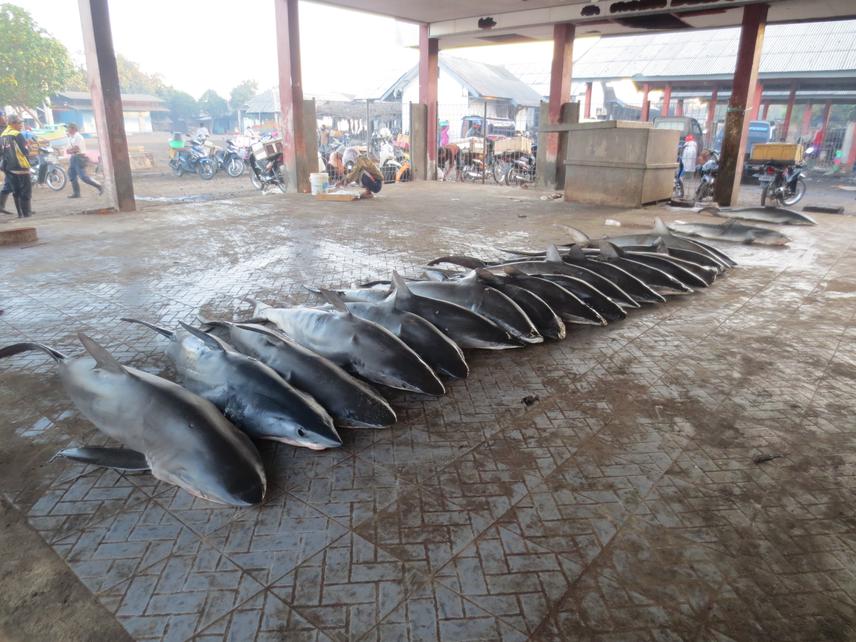Betty J.L. Laglbauer
This project will combine fishing market surveys, citizen science, and interviews in West Nusa Tenggara to (1) describe species specific abundance at main aggregation sites, (2) describe species-specific foraging habits of mobulas, and (3) outreach activities to promote understanding between stakeholders while exploring potential solutions to reduce mobula by-catch and directed fisheries in Indonesia. Implementation of conservation measures on a local scale will be supported by producing information on the overlap of specific fisheries with potential feeding grounds, a photographic database, educational material, and recommendations for governmental institutions.

Indonesia is home to the fifth most productive fishery in the World; with a total marine capture production of 5.4 million tones recorded in 2010 (FAO, 2013). The recent modernization of fishing techniques in the country has lead to the overfishing of many elasmobranch species in the Java Sea (Blaber et al., 2009). In particular, great concern is raised concerning the vulnerability of mobulid rays to overfishing in Indonesia, due to the increasing demand for mobulid gill rakers in the Chinese medicine market. The recent creation of a large manta sanctuary in Indoneisan waters could shift demand to mobula species, which similarly to the genus manta, are thought to possess low fecundity, slow growth, and late maturation (Couturier et al., 2012; Dulvy et al., 2014).
The two most abundant mobula species in Guangzhou markets were also the two most commonly caught species in Indonesia, representing ~ 50% (M. japanica) and 24% (M. tarapacana) of the total mobula by-catch (White et al. 2006; Ward-Paige et al., 2013). Illustrating the concern for this little-known genus is their addition to the Convention on Migratory Species (CMS CoP11) last year, which calls for urgent collaborative efforts to implement protection measures on a local scale. Specifically, work towards habitat conservation, mitigating obstacles to the migration, and controlling fisheries of mobulas is now necessary, and will require providing basic biological and ecological information for mobulas. For example, determining the overlap of fisheries with mobula feeding grounds will constitute essential information to understand which proportion of the population is under a particular threat and how, when and where management is needed. Mobulas are often confused with mantas and disregarded for alternative activities to fishing (i.e. ecotourism) due to their epipelagic behaviour, although predictable aggregations in some places of the World (e.g. in the Azores) are proving otherwise.
Our project will focus on mobula spp. that are landed in Indonesia, mostly as by-catch in tuna drift gillnets: M. tarapacana and M. kuhlii (‘Data Deficient’) M. japanica, M. thurstoni and M. eregoodootenke (‘Near Threatened’) (White et al., 2006; White & Dharmadi 2007; White et al., 2014, IUCN Red List for Threatened Species).